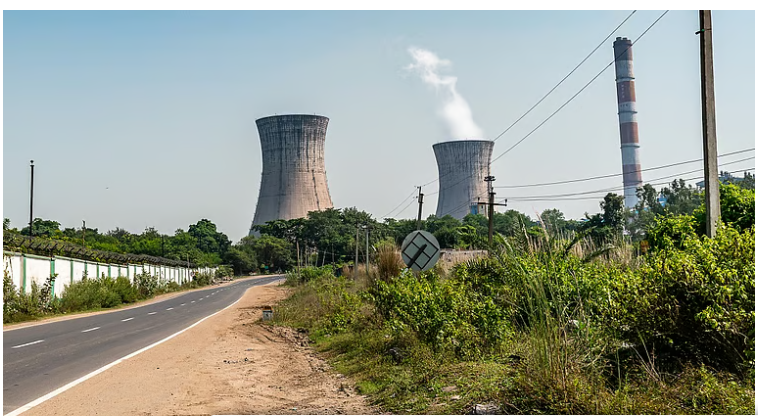Carbon dioxide as well as other warming gases increased by record levels in 2024: WMO

Carbon Dioxide and Other Warming Gases Increased by Record Levels in 2024: WMO Sends Red Signal
Analysis:
- The World Meteorological Organization (WMO) in its Greenhouse Gas Bulletin (2025) has sounded a “red signal” for the planet, reporting that carbon dioxide (CO₂) and other major greenhouse gases surged to record levels in 2024, driven by human activities, wildfires, and a reduced capacity of natural sinks such as forests and oceans.
- The global average CO₂ concentration rose by 3.5 ppm between 2023 and 2024, the largest annual increase since measurements began in 1957, reaching 423.9 ppm — up 12.5% in just two decades (compared to 377.1 ppm in 2004).
- The WMO attributes this unprecedented spike to:
- Continued fossil fuel emissions,
- Wildfire emissions in regions like the Amazon and southern Africa, and
- Reduced CO₂ uptake by natural sinks due to El Niño-induced droughts and high temperatures.
- The year 2024 was the warmest on record, with El Niño conditions amplifying droughts, wildfires, and ocean warming — further weakening natural carbon absorption.
- CO₂ Growth Rate Trend:
- 1960s: 0.8 ppm/year
- 2011–2020: 2.4 ppm/year
- 2024: 3.5 ppm/year (record high)
- WMO Deputy Secretary-General Ko Barrettstated:
“The heat trapped by CO₂ and other greenhouse gases is turbo-charging our climate and leading to more extreme weather. Reducing emissions is essential not just for climate stability but for economic security and community well-being.”
- The report has been released ahead of COP30, the United Nations Climate Change Conference, set to be held in Belem, Brazil, in November 2025 — urging policymakers to deliver tangible outcomes rather than “theoretical climate action.”
Other Greenhouse Gases Also Rising:
- Methane (CH₄):
- Contributes ~16% of total global warming effect.
- Lifetime: ~9 years.
- Sources: 60% anthropogenic (livestock, fossil fuels, landfills, rice cultivation), 40% natural (wetlands).
- Methane levels hit an all-time high in 2024, continuing the steep climb of recent years.
- Nitrous Oxide (N₂O):
- Global average concentration reached 338 ppb in 2024, a 25% increase over pre-industrial levels.
- Sources include agriculture (fertilizers, manure), biomass burning, and industrial emissions.
Scientific Context & Concerns:
- Natural Sinks Weakening: Land ecosystems and oceans currently absorb ~half of human CO₂ emissions, but rising temperatures and altered precipitation patterns are reducing their efficiency, creating a vicious climate feedback loop.
- Wildfires: Massive 2024 wildfires contributed significantly to CO₂ release while simultaneously reducing vegetation that could act as a sink.
- El Niño Effect: Typically reduces tropical vegetation growth and enhances fire risk, further spiking atmospheric CO₂ levels.
- Long-term Implication: Even if emissions stabilize, these gases persist — locking in centuries of warming.
Policy Relevance:
- The WMO report provides scientific inputfor climate negotiations at COP30, calling for:
- Faster fossil fuel phase-out,
- Protection and restoration of carbon sinks,
- Enhanced global greenhouse gas monitoring, and
- Accountability for high-emitting nations.
Static Insight:
- Greenhouse Effect: CO₂, CH₄, and N₂O trap infrared radiation, warming the Earth’s lower atmosphere.
- Global CO₂ Levels: Pre-industrial (~1750): 280 ppm → Now (2024): 423.9 ppm.
- WMO Greenhouse Gas Bulletin: Annual flagship report assessing concentrations and trends of key greenhouse gases.
- El Niño: A periodic climate pattern in the Pacific that influences global temperature and precipitation, often amplifying drought and fire events.
Updated - 16 Oct 2025, 5:21 pm | Down to Earth
WMO Greenhouse Gases CO2 Emissions Methane Nitrous Oxide Climate Change El Niño COP30 Belem Global Warming Wildfires Fossil Fuels Climate Policy Carbon Sink Deforestation Ocean Acidification Extreme Weather Global Temperature Rise Carbon Cycle Greenhouse Gas Bulletin United Nations Framework Convention on Climate Change Climate Feedback Atmospheric Science Environmental Policy